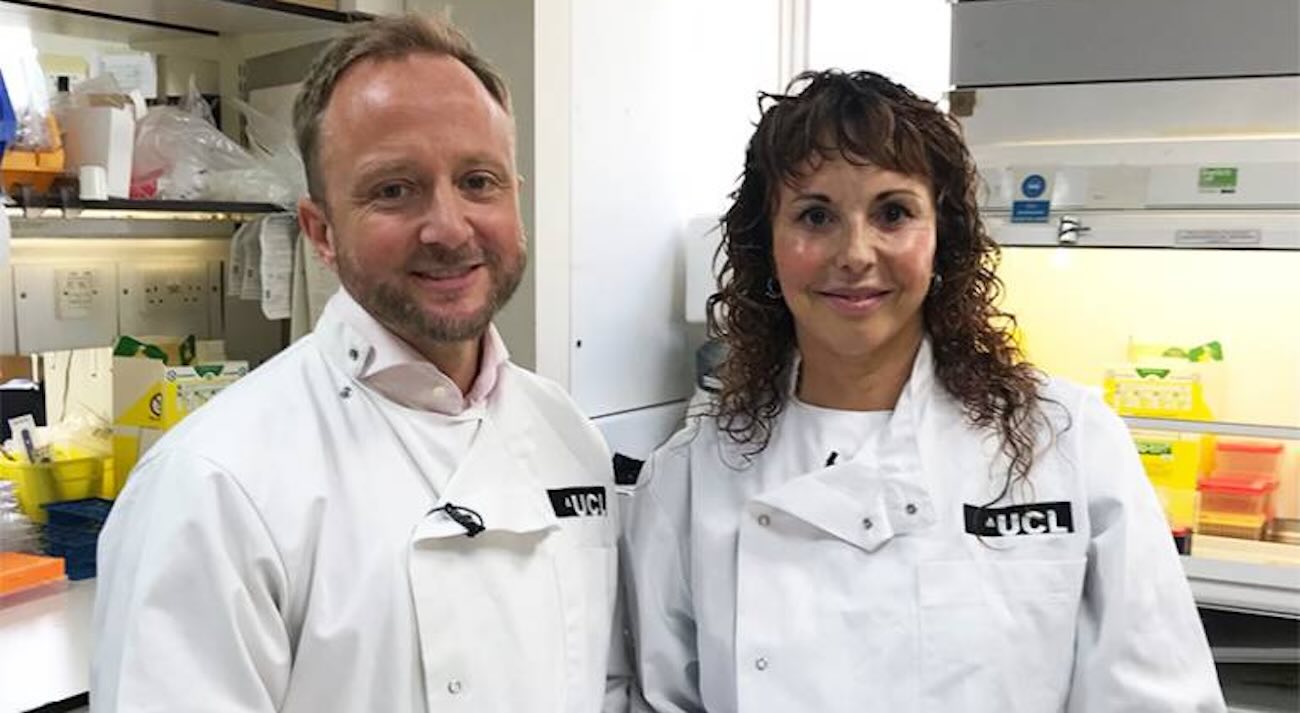
There is no cure for Huntington’s disease, a devastating brain disorder that causes severe motor loss, dementia, and eventual death.
But, a clinical trial delivered positive results this week, finding that patients receiving a new treatment for 36 months experienced 75% less progression of the disease overall (compared to patients who did not receive the treatment).
This is the first time a drug trial achieved a significant slowing of Huntington’s progression, according to uniQurea, a gene therapy company based in the Netherlands and US.
The new gene therapy, AMT-130, was performed on 29 patients including 12 who were given a high dose. Those given a high dosage of AMT-130 experienced 75% less disease progression, as measured by a standard rating scale that incorporates motor, cognitive, and functional measures.
There was also a statistically significant benefit as measured by other scales of disease progression, including motor and cognitive function.
MORE GENE BREAKTHROUGHS: Type 1 Diabetic Produces His Own Insulin After Gene-Edited Cell Transplant
The researchers also measured participants’ levels of neurofilament light protein (NfL), a protein that is released into the spinal fluid when neurons are injured—a useful marker for neuronal damage. The scientists found that NfL levels in the spinal fluid were lower in people treated with the drug than they had been at the start of the trial, even though NfL levels would be expected to increase by 20-30% over three years. They say this suggests the course of the disease has been slowed.
The trial, conducted by scientists at University College London (UCL) with funding from uniQure, also found that “AMT-130 is generally well-tolerated by study participants and has a manageable safety profile”.
“l am thrilled,” said Professor Sarah Tabrizi of UCL’s Huntington’s Disease Research Centre and lead scientific advisor on the trial. “For patients, AMT-130 has the potential to preserve daily function, keep them in work longer, and meaningfully slow disease progression.”
It is expected that a single dose of AMT-130 would last for a person’s whole life.
THE MIRACLE OF SIGHT: 100 Times Improvement in Sight Seen After Gene Therapy Trial for Disease That Deteriorates Vision in Childhood
UniQure plans to submit an application to the US Food and Drug Administration early next year requesting accelerated approval to market the drug, with applications in the UK and Europe to follow.
“This result changes everything,” said Professor Ed Wild, principal investigator of the UCL Huntington’s Disease Centre trial site at UCL.
“My patients in the trial are stable over time in a way I’m not used to seeing in Huntington’s disease – and one of them is my only medically-retired Huntington’s disease patient who has been able to go back to work.”
“Behind each datapoint is an incredible patient who volunteered to undergo major neurosurgery to be treated,” added Prof. Wild.
About the treatment
Huntington’s disease is caused by a single genetic mutation, a discovery made in 1993. People with an affected parent have a 50% chance of inheriting the mutation, meaning they will develop disease symptoms—but until now, there were no effective treatments to prevent or slow the progression of the disease.
About 12,000 people in the U.S. are currently living with Huntington’s disease, and about 8,000 in the UK.
The new gene therapy permanently introduces new functional DNA into a person’s cells. It consists of particles of a harmless, empty virus, plus a set of instructions encoded in custom-made DNA. The virus is injected directly into a part of the brain called the striatum which is particularly vulnerable in Huntington’s disease. This is done using a highly complex neurosurgical technique called stereotactic surgery, in which tiny tubes called catheters are guided to the right part of the brain. Once in the brain, the virus particles enter the neurons and release the DNA cargo.
The AMT-130 DNA becomes a permanent addition to the neuron. It contains a set of instructions for making a molecule of RNA which has been designed to bind to the RNA which is produced when a cell is making the huntingtin protein. When AMT-130 RNA binds to the cell’s own huntingtin RNA, it summons an enzyme to destroy it. As a result, the huntingtin message is deleted and less of the protein is made – permanently.
GENIUS GENETICS: Infant With Incurable Disease is First to Successfully Receive Personalized Gene Therapy Treatment
The neurosurgeries for the UK arm of the trial were conducted at the University Hospital Wales at Cardiff University, and funded by Health and Care Research Wales. The trial results will be presented formally in the US at the HD Clinical Research Congress next month in Nashville, Tennessee.
(Watch a video about the therapy from Reuters below…)
SHARE THE BREAKTHROUGH With Patients On Social Media…
